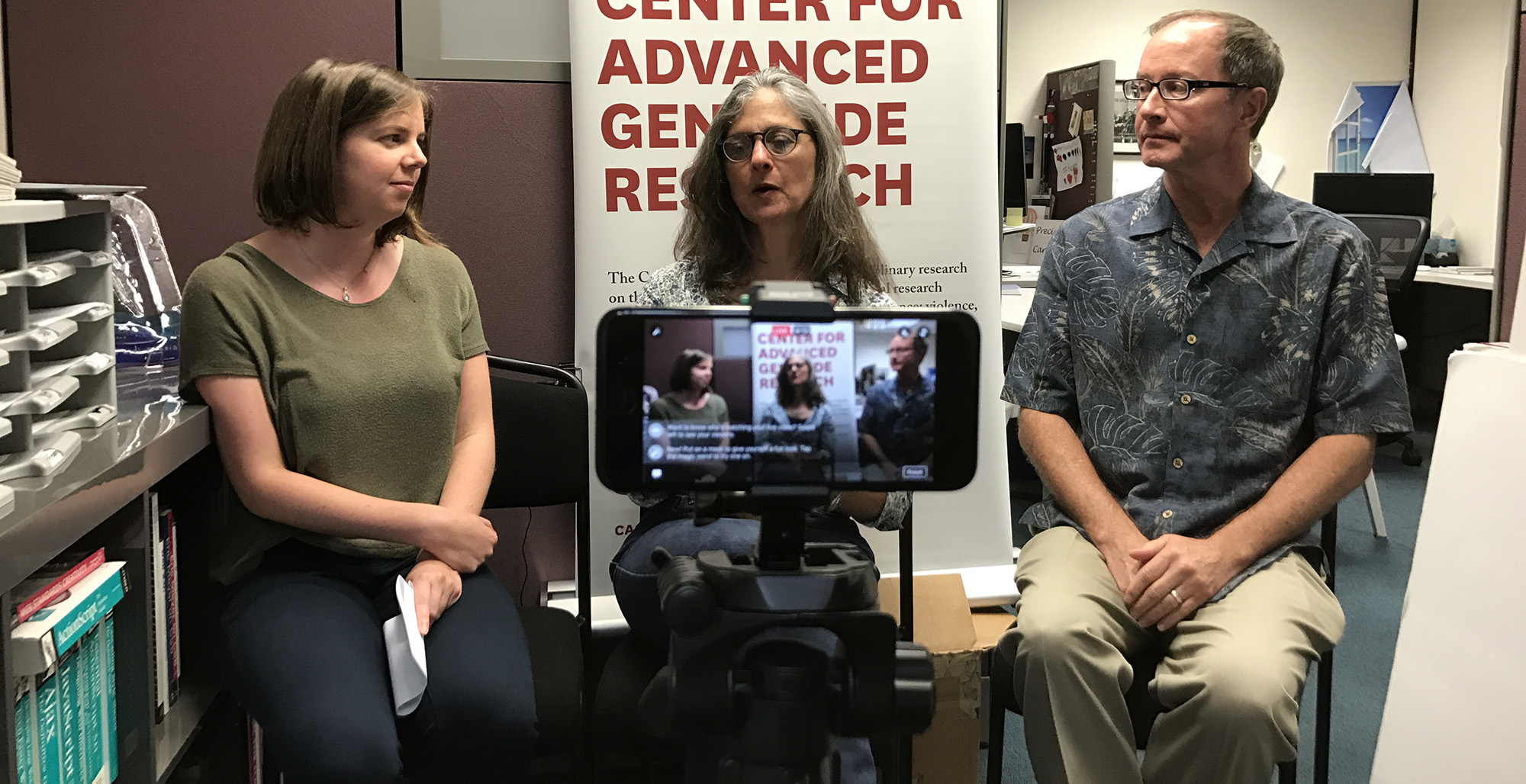International Teaching Fellow and Texas A&M Teaching Fellow Discuss Teaching with Testimony in Facebook Live Interview

Two of USC Shoah Foundation Center for Advanced Genocide Research’s 2017-2018 teaching fellows shared the courses they’re developing and how testimony impacts their work as scholars and teachers in a Facebook Live conversation on Thursday.
Daniel Conway, A.I. and Manet Schepps Foundation Teaching Fellow at Texas A&M University, and Rutgers University’s Nancy Sinkoff, International Teaching Fellow, have both been in residence at the Center this week consulting with staff and doing research in the Visual History Archive for courses they will teach this year.
Conway will incorporate testimony into a course he teaches about philosophy in science fiction films, in particular how sci-fi films often portray forms of genocide. During his fellowship, he has been searching for testimonies that match up in some way with experiences of the characters in the films his students will be watching, including 2001: A Space Odyssey, District 9, and The Matrix.
Sinkoff is teaching a course about exile under Nazism and communism, and wants to focus on Jews’ movement through the region.
“I’m always trying to get students to think about the place and region, because it’s so distant from most Americans,” Sinkoff said. “The testimonies I’ve already just dipped into are so helpful and illustrative of regional changes and place. What it meant to cross a border, cross a river, the different town names, languages people use. All that comes through in the testimonies.”
The testimonies Conway has found that he would like to incorporate into his course often center on the theme of dehumanization, of survivors describing how they felt like “robots” or “zombies” while they were imprisoned in concentration camps. This theme mirrors his sci-fi films perfectly, he said.
“That’s the sort of thing I just can’t reproduce for my students,” Conway said. “I‘d like them to take in the full effect of the first person testimony.”
Conway and Sinkoff each have different ideas for incorporating testimonies into their courses. Conway’s students will each choose a survivor to study and give a report to the class about how he or she relates to one of the films they’ve watched. Sinkoff is thinking about showing clips of different survivors describing the same event, to illustrate how different people viewed the same event from very different perspectives, or even having her students map a survivor’s trajectory through the Holocaust.
They both encourage other professors to explore the Visual History Archive and think creatively about how they can use testimonies in their own courses – even if the connections aren’t obvious. Sinkoff added that it’s important for professors to adapt to the changing pedagogical landscape, and to embrace new multimedia tools.
They agreed that the testimonies are fascinating, rich, and hard not to be affected by – and so magnetic that they both found themselves watching hours of a testimony they only meant to watch a few minutes of. They are confident that their students will feel the same way, and be challenged and enlightened by the stories the survivors tell.
“Our job is to make things complicated, that’s what we do in the classroom,” Sinkoff said. “The testimonies are so human and people express complexity [in the testimonies] all the time.”